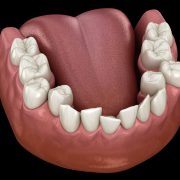What Causes Mismatched Dental Midlines?
A dental midline refers to an imaginary line that divides the face. Running vertically, it’s a way for dentists to judge the symmetry of a patient as a key part of their overall oral health. We’ll look at what mismatched dental midlines are and what causes them.
Fast Facts About Dental Midlines
Mismatched dental midlines in Solon, OH, occur when the center of the upper and lower teeth are misaligned. This can cause the smile to be uneven, but it’s more than an aesthetic problem. Dental midlines can affect your overall bite, leading to discomfort when you eat or long-term dental issues.
Dental midlines are sometimes caused when a child loses their baby teeth too early, as the surrounding teeth will crowd in immediately to fill the gap. Habits like thumb-sucking or tongue-thrusting can also be contributing factors. Misaligned jaws and uneven eruption of adult teeth can also put pressure on the midline, causing it to be thrown off center. Even genetics plays a role, as many people will inherit mismatched midline from their parents.
In some cases, parents or dental professionals may be able to intervene by forming a midline. For instance, curbing or preventing oral habits like thumb sucking. Whether you can intervene or not though, the best course of action is always to seek treatment as early as possible.
Orthodontists in Solon, OH
Not everyone with a mismatched dental midline will need extensive treatment. The right course of action will depend on everything from the severity of the mismatch to the overall state of your oral health. At McGuire Orthodontics and Facial Orthopedics, our orthodontists in Solon, OH, can help you decide on the next steps.








